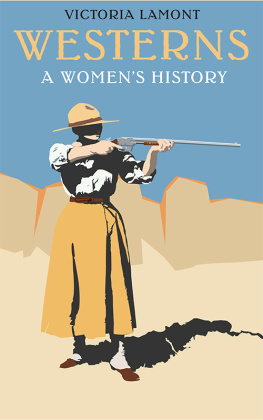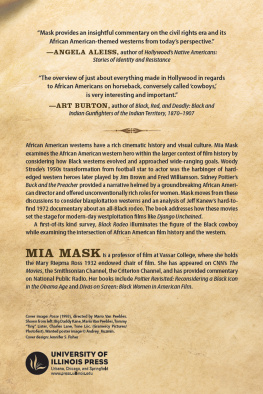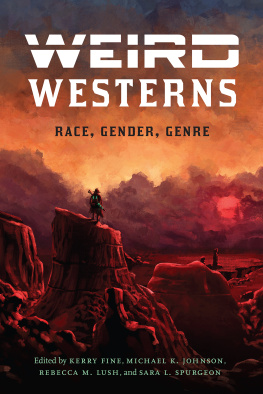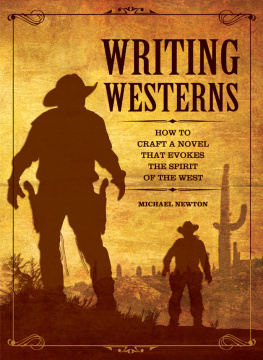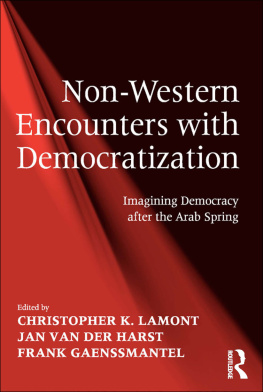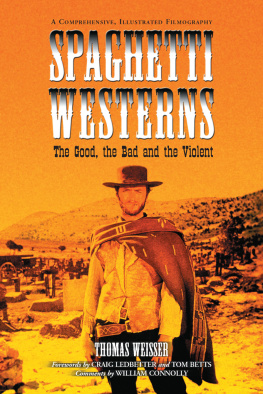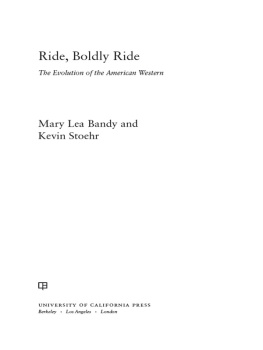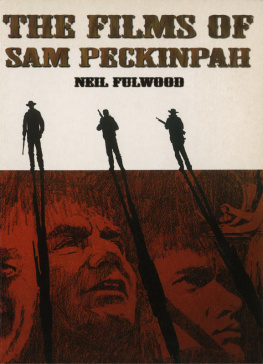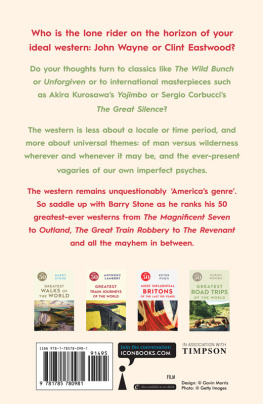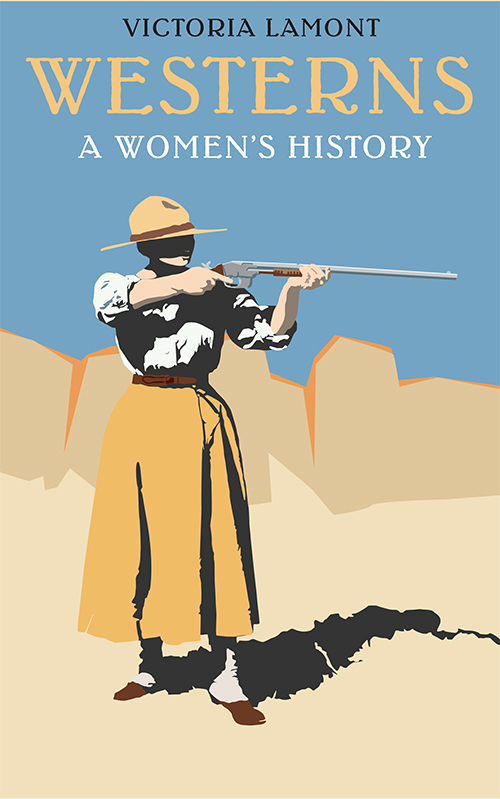
Lamont has made the subject of the western important all over again.... As a piece of feminist recovery work, Lamont has reordered the scholarly record about a canonical national tradition. By definition this is a major work.
Krista Comer, author of Surfer Girls in the New World Order
This book promises nothing less than to tell an alternative origin story of the popular western, and it succeeds in spades. Through a series of brilliant readings, canny archival research, sheer wit, and even laugh-out-loud moments, Lamont decisively changes the face of womens westerns. In the process she makes her reader rethink not just the genealogy of popular westerns but the gender, class, and race dynamics of the literary marketplace, early feminisms, and scholarly blind spots.... This book leads the way in that rethinking, with wit, flair, and deep persuasiveness.
Christina Bold, author of The Frontier Club: Popular Westerns and Cultural Power, 18801924
Westerns
Postwestern Horizons
General Editor
William R. Handley
University of Southern California
Series Editors
Jos Aranda
Rice University
Melody Graulich
Utah State University
Thomas King
University of Guelph
Rachel Lee
University of California, Los Angeles
Nathaniel Lewis
Saint Michaels College
Stephen Tatum
University of Utah
Westerns
A Womens History
Victoria Lamont
University of Nebraska Press | Lincoln and London
2016 by the Board of Regents of the University of Nebraska
All rights reserved
Parts of this book are based on previously published material. Chapter 2 and parts of the conclusion are drawn from The Bovine Object of Ideology: History, Gender and the Origins of the Classic Western, in Western American Literature 35.4 (2001 Winter): 373401. Chapter 4 is a revised version of Native American Oral Practice and the Popular Novel; or, Why Mourning Dove Wrote a Western, in Western American Literature 39.4 (2005 Winter): 36893. An earlier version of chapter 5 appeared as Cattle Branding and the Traffic in Women in Early Twentieth-Century Westerns by Women, Legacy 22.1 (2005): 3046.
All images are from Romantic Range, which is and Cond Nast. Used with permission.
Library of Congress Control Number: 2016937696
The publisher does not have any control over and does not assume any responsibility for author or third-party websites or their content.
For Christine
Contents
In 1991, as a new MA student at the University of Guelph, I signed up for a graduate seminar on Women and the West with Christine Bold. I owe my subsequent career to that seminar. It was Christine who introduced me to the study of popular culture and to some of the women writers, including B. M. Bower and Frances McElrath, who figure prominently in this book. Christine also provided invaluable feedback on early drafts of this book. I am also indebted to the mentorship of Mary Chapman, who supervised my dissertation; Melody Graulich, who edited my early publications and went out of her way to welcome me into the scholarly community at the Western Literature Association, and Dianne Newell, who has been a generous mentor, collaborator, and friend. Virginia Shay, Sarah York, Natalie Blagden, Stephanie Jorgensen, and Ashna Zaidi provided first-rate research assistance to this project. I also thank Kristin Elias Rowley and the staff at the University of Nebraska Press, who have been nothing but patient and helpful throughout the process of preparing this book. I have also been fortunate to have been a part of the thriving scholarly communities at the Western Literature Association, where many of the ideas in this book were first tested, and at the University of Waterloo English Department, where I am continually inspired and energized by our dedicated staff, students, and faculty. I thank my partner, John Straube, for his patience and understanding and for looking after the dogs.
This book involved archival research at the Houghton Library, Harvard; the Library of Congress; and the Syracuse University Library. I am thankful to the staff at all of these libraries for their assistance. The interlibrary loan department at the University of Waterloo has been tremendously helpful in tracking down many obscure documents needed for my research. This project would also not be possible without digital archives, including the Colorado Historic Newspaper Collection, the Pulp Magazines Project, and Galactic Central. I thank the many individuals who contribute to the time-consuming process of cultural preservation by digitizing and organizing important ephemeral documents. Reed Doke and Bill Bower, grandsons of B. M. Bower, contributed invaluably to this project by sharing their memories and family stories with me. I am especially grateful to Reed for allowing me to park in his sunroom for days on end while I poured over his grandmothers extensive archives and for making excellent turkey sandwiches.
Research for this book was generously funded by the Social Sciences and Humanities Research Council of Canada, with additional support provided through the Bob Harding and Lois Claxton Humanities and Social Sciences Endowment Fund at the University of Waterloo.
This book argues that the popular western, widely considered a male-authored tradition, was founded as much by women writers as by men and played a significant role in American womens literary history at the turn of the twentieth century. The popular western acquired the substance of its current shape in the form of quality novels that, during the late nineteenth and early twentieth centuries, reclaimed the popular West from the dime novels and other cheap publications in which stories of the West and the frontier had flourished. These new quality westerns were within the purview of both male and female authors. Indeed, the first known cowboy novel outside of the dime novel tradition was written by a woman, the Colorado suffragist Emma Ghent Curtis, and published in 1889, thirteen years before the popular western was supposed to have been reinvented by Owen Wister, who published his novel The Virginian in 1902. The Virginian was itself based on the Johnson County Rustler Wars of 1892, as was a competing novelization of those events written by a woman, Frances McElraths The Rustler, also published in 1902. One of the most prolific authors of serial westerns to profit from imitating The Virginian, B. M. Bower, was also a woman. Indeed, women were active at every turn during the period, between roughly 1880 and 1940, when the American frontier myth, after years of ghettoization in the dime novel, was supposedly reborn as a dominant myth of American identity. This book is a revisionist account of the origins of the popular western that takes into account the many women who helped constitute the genre.
When we cordon off women writers in a feminized subcategory, we tacitly endorse their continued exclusion from discussions of the genre when we should be rethinking our understanding of the genre in order to account for them.
This book recovers selected women writers active during the emergence of what we now call the popular western, loosely dated from 1890the year the federal census pronounced the frontier closedto the outbreak of World War II. By popular western I mean fiction set on the postCivil War cattle frontier, written for a popular but respectable audience of adult readers. In this respect my study does not include dime novels and related cheap fiction, such as Street & Smiths Buffalo Bill and similar series (although it does address novels that respond to them). These publications targeted primarily juvenile readers and featured stories built around series characters. The paradigm for the twentieth-century popular western, however, was established in two new and related venues: western novels published by quality publishers who distinguished their literary goals from the commercial interests of the cheap press (Radway,

